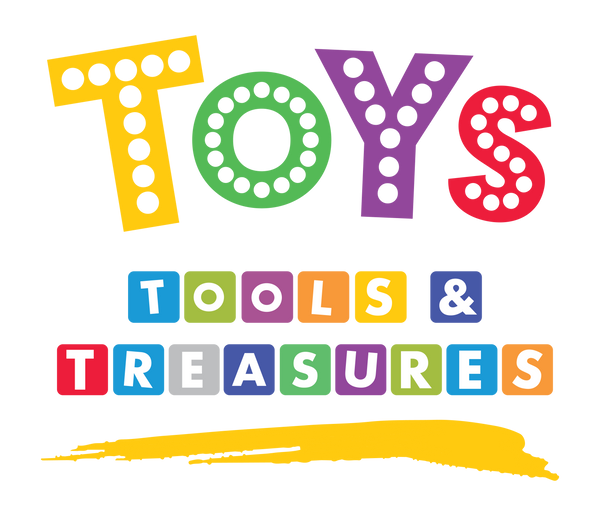OT Tips
What is Occupational Therapy?
Occupational Therapy involves Skills for the Job of Living!
Occupational therapy is a health profession concerned with promoting health and well-being through occupation. Occupation refers to everything that people do during the course of everyday life. For children this would include such things as playing and leisure activities, doing school work, and participating in self-care activities, such as dressing, eating, bathing and grooming.
The primary goal of occupational therapy is to enable people to participate in the occupations which give meaning and purpose to their lives.
Occupational therapists have a broad education that equips them with the skills and knowledge to work collaboratively with people of all ages and abilities that experience obstacles to participation.
These obstacles may result from developmental/learning challenges or a change in function because of illness or disability. Barriers in the social, institutional and/or physical environment may also impede participation in meaningful activities.
Children learn by doing!
Good sensations are a necessity!
Here are definitions of some of the terms used by occupational therapists:
Arousal: the state of the nervous system ranging from sleep to awake, from low to high. The optimal state of arousal is the "just right© mid-range where we feel alert and calm
Auditory Defensiveness: the over-responsiveness to normal sound or the registration of auditory input that normally would be ignored
Bilateral Co-ordination: the ability to use both sides of the body together in a smooth, simultaneous, co-ordinated manner
Body Awareness: the perception of one©s own body parts, where they are and what they are doing
Cognitive Skills: thinking, reasoning, and other intellectual abilities; mental abilities that help us process external stimuli
"A human being is designed to enjoy things that promote the development of his brain and therefore will naturally seek sensations that help organize the brain©
Dr. A. Jean Ayres
Crossing the Midline: the ability to use one side or part of the body (ex. hand, foot, eye) in the space of the opposite side or part
Eye-Hand Co-ordination: the efficient teamwork of the eyes and hands, necessary for activities such as playing with toys, writing, dressing or eating
Fine Motor Skills: the development and use of small muscle coordination to perform activities; usually refers to the hands
Gravitational Insecurity: Anxiety and distress caused by movement of the feet off a stable surface or changes in head position that normally would be viewed as non-threatening. Over-responsiveness of the vestibular (movement) system
Gross Motor Skills: pertaining to the movement of the large muscles in the arms, legs and trunk. Included in this category are actions such as walking, jumping and throwing.
"Three-dimensional, hand-on, hard-work play builds better brains and bodies©
Carol Stock Kranowitz
Modulation: the brain©s ability to regulate and organize the degree, intensity and nature of the person©s response to sensory input in a graded and adaptive manner
Motor Planning: the ability to plan, organize and sequence a complex and unfamiliar body movement in a co-ordinated manner
Perception: the meaning that the brain gives to sensory input
Proprioception: the unconscious awareness of sensations coming from receptors located in the joints, muscles, tendons and ligaments that provides information about where each part of the body is and how it is moving. The position sense
Oral Defensiveness: hypersensitivity in the mouth to certain food textures, tastes or temperatures
Oral-Motor Skills: movements of the muscles of the mouth, lips, tongue and jaw, including sucking, biting, chewing, crunching and licking
Self-Regulation: the ability to control one©s activity level and state of arousal, as well as one©s emotional, mental or physical responses to sensations; self-organization
"When the child experiences challenges to which he can respond effectively, he "has fun©©
Dr. A. Jean Ayres
Sensory-Motor: pertaining to the brain-behavior process of receiving messages from sensory stimuli and producing physical responses, thoughts and feelings
Sensory Processing:is the ability to take in information through senses (touch, movement, smell, taste, vision, and hearing), to put it together with prior information, memories, and knowledge stored in the brain, and to make a meaningful response
Sensory Defensiveness: a sensory integrative disorder characterized by a "fight, flight, or fright" reaction to sensory information most individuals would consider harmless; having an anxious or negative reaction to sensory input that is typically considered either positive or at least neutral.
Sensory Modulation Dysfunction: a problem in the capacity to regulate and organize the degree, intensity and nature of a response to sensory input in a gradual and adaptive manner
"Learning + Creating = Living©
Chris Brewer and Don G. Campbell
Sensory Processing Disorder (SPD) (formerly known as Sensory Integrative Dysfunction (SID): is a complex disorder of the brain. Individuals with SPD misinterpret everyday sensory information, such as touch, sound, and movement. They may feel bombarded by sensory information or seek out intense sensory experiences or have other problems. This can lead to behavioral problems, difficulties with coordination, experiencing low self-esteem and other issues.
Tactile Defensiveness: the tendency to respond negatively and emotionally to certain touch experiences that others find to be non-threatening
Tactile Sense: the sense of touch
Tripod Grip: the grasp on a writing utensil that involves using the thumb, index and middle fingers
Vestibular Sense: the sense of balance and movement; responds to changes in head position, movement, and to the pull of gravity
Visual-Motor: movements based on the perception of visual information
"You can think of sensations as "food for the brain©; they provide the energy and knowledge needed to direct the body and mind© Dr. A. Jean Ayres
